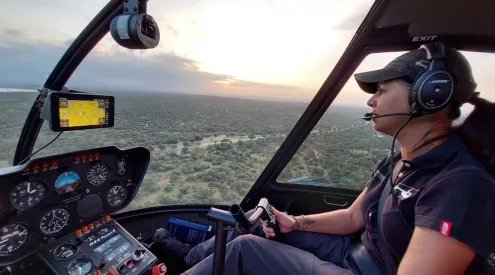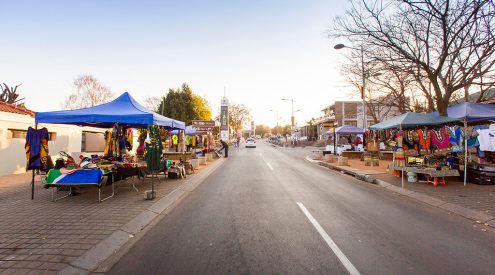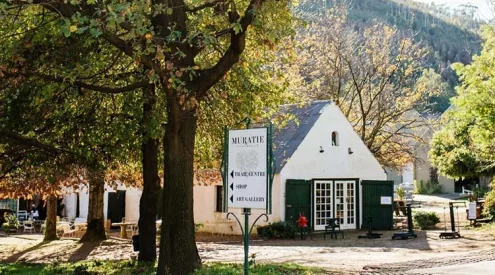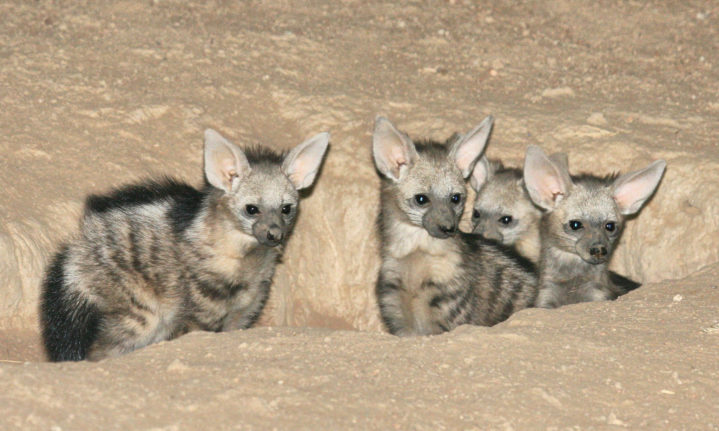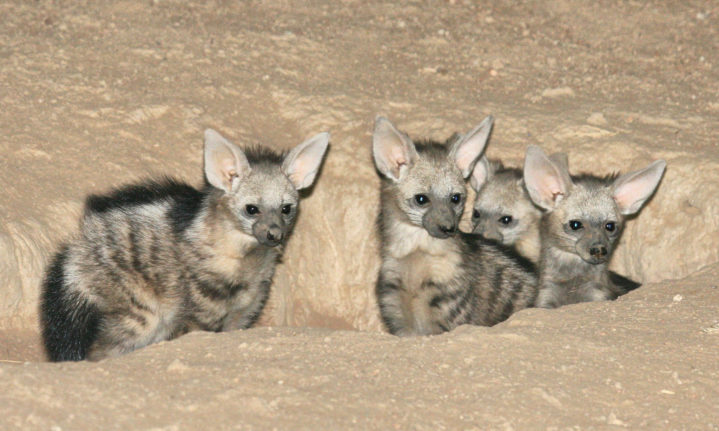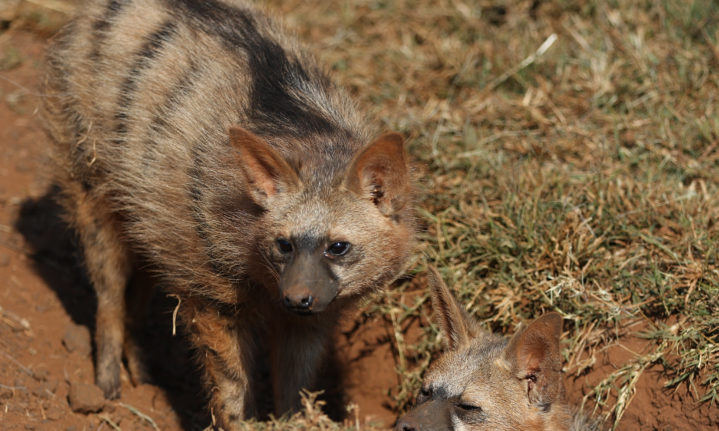The aardwolf is one of the most specialised carnivores on the African continent, yet it tends to live in the shadow of its hyena cousins. Its curious palate for termites aside, aardwolves have amusing evolutionary oddities and a scandalous social life, where they will often cuckold neighbours despite their monogamous pairings.
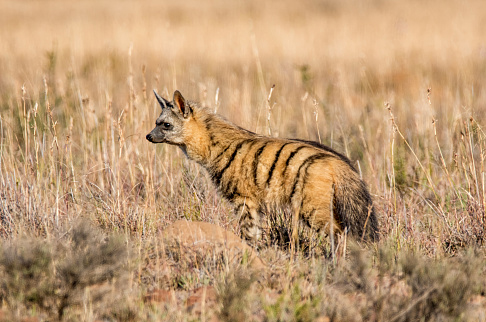
Picture: Getaway Gallery
What is an aardwolf?
When directly translated from Afrikaans, aardwolf means ‘earth wolf’ which refers to their underground dens and canine-like appearance.
This canine appearance can be misleading, the aardwolf is not part of the canine family but its own family – along with hyenas – Hyaenidae.
The species occurs exclusively in Africa with two distinct populations: one in the east of the continent from Egypt south to central Tanzania, and another ranging from Angola and Mozambique into Southern Africa.
Aardwolves are grassland specialists, capable of occupying open and degraded grassland as long as there is an abundance of termites.
They are found throughout all nine provinces in South Africa, favouring drier areas, with a stable population of one adult per square kilometre on certain farms. A key factor in their ability to survive in such a range of habitats is their independence from water, obtaining all their moisture requirements from termites.
As long as there are termites
Unlike other evolved termite specialists like anteaters and pangolins who have powerful claws to unearth their prey, aardwolves rely on termite species that forage in large numbers on the surface.
Without the bone-crushing jaws of their hyena cousins, aardwolves have slim jaws with greatly reduced molars, essentially flattened pegs. They do have sharp canines, but these are only for self-defence.
To add to their specialised molars, aardwolves have large salivary glands that secrete a constant stream of sticky saliva to coat the tongue, allowing them to lick up over 200 000 termites every night.
To stomach termites, aardwolves exhibit a trait essential to their survival: the ability to digest the toxic secretions of termites.
Monogamous?

Picture: Flickr Commons/ Derek Keats
Much like the striped hyena, the aardwolf tends to form socially monogamous pairs where both males and females assist in the rearing of the young.
Observations have revealed, however, that they sometimes tend to be sexually polygamous with intruding or neighbouring individuals. Males will often invade other dens and females, if allowed the opportunity, will regularly mate with the intruder.
This form of sexual behaviour is said to be rare in the animal kingdom, but the male will likely continue to assist with raising the cubs, even if they are not his own.
Aardwolf litters usually consist of two to three cubs who remain inside the den for at least six weeks. These cubs will begin with brief foraging excursions from about three months old, becoming independent at the young age of four to six months.
When they reach one year old, both male and female aardwolves leave the den to establish their own territory.
Conservation status
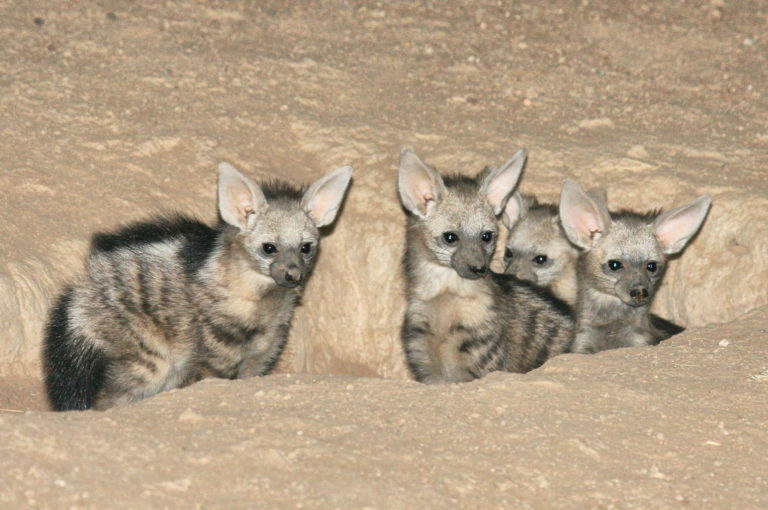
Picture: Flickr Commons/ Wildlife Wanderer
They are listed as Least Concern on the IUCN red list of threatened species both globally and regionally in South Africa. The last assessment of aardwolves in 2016 found them to have thriving populations in many national parks and reserves, including the Kgalagadi Transfrontier Park, Kruger National Park and Pilanesberg National Park.
Even though habitat loss could be problematic, aardwolves have shown great resilience and the ability to adapt to different areas. Many cattle farms with a prevalence of termite mounds report regular sightings of aardwolves.
The Environmental Wildlife Trust states that there are currently no major threats to aardwolves but they may be vulnerable to future environmental changes as a specialised predator dependent on grassland environments.
In the wild, predators such as leopards, lions and other hyenas are known to kill both aardwolves and their cubs.
ALSO READ
Nature’s building blocks: Meet the keystone species of southern Africa
Kruger’s strangest animal: 7 things you didn’t know about the Aardvark


